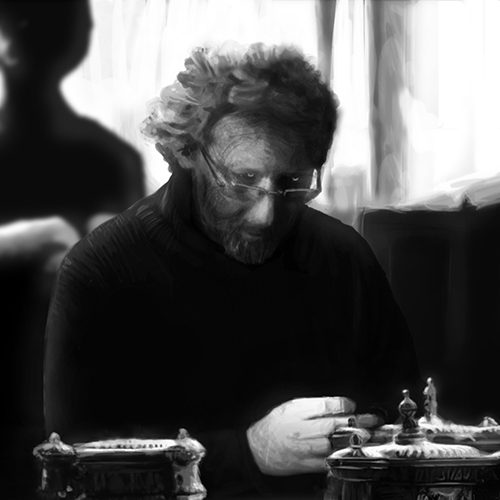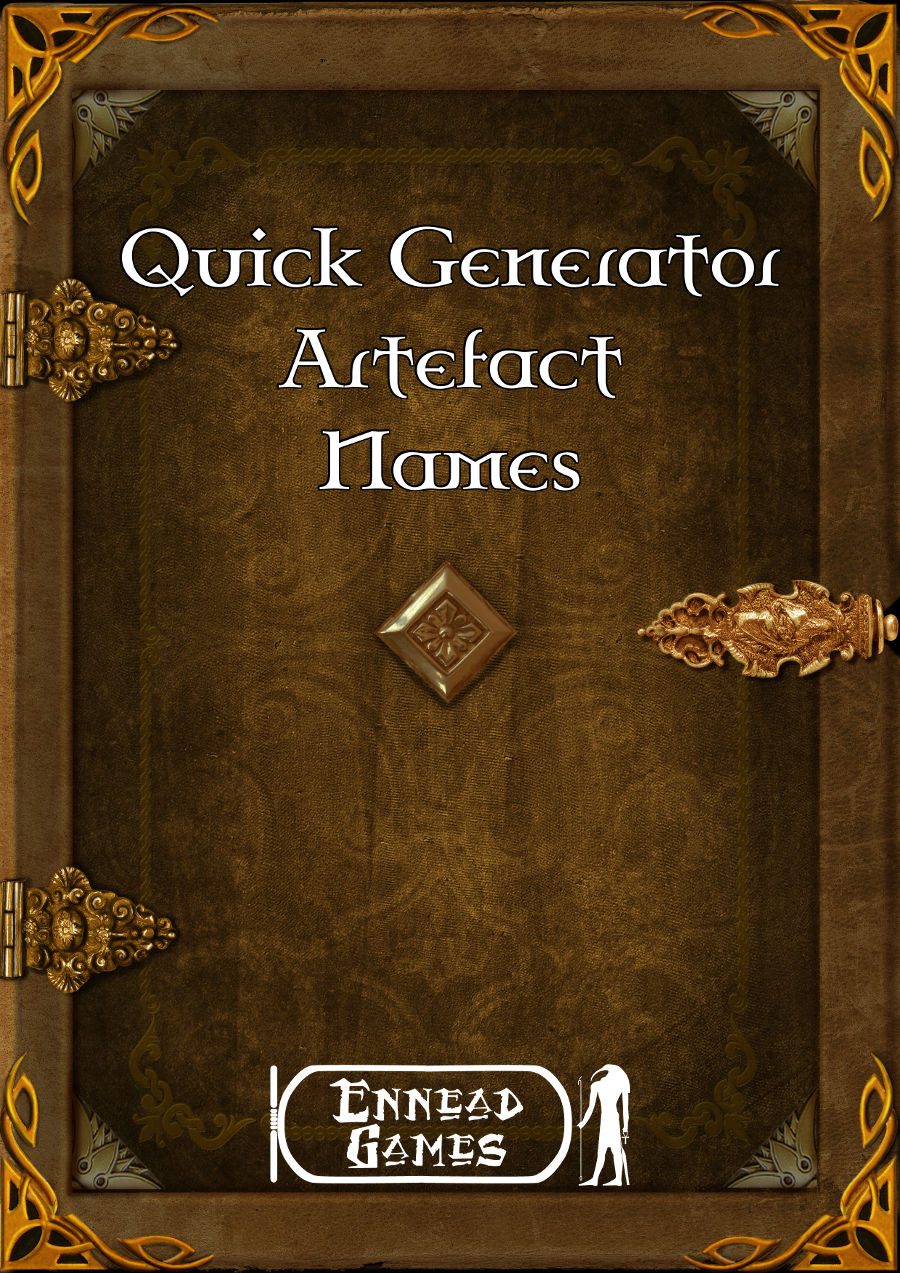
Little Wizards & Making Failure Interesting
Phil Nicholls blogs at Tales of a GM, where he writes about narrative gaming, faster prep and more story. He is currently running a HeroQuest Glorantha campaign in a home-brew setting. Phil has written for Johnn Four’s Roleplaying Tips newsletter and produced a selection of self-published pdfs.
This essay is taken from the archives at Tales of a GM.
I enjoy reading RPGs in search of ideas I can use in my game. Inside Little Wizards I found excellent advice about turning failure in RPGs into an interesting story point.
Little Wizards
Little Wizards is an RPG aimed at children. It was written by Antoine Bauza, and translated by Franck Florentin and Amanda Valentine. Players take on the role of a Mage or a Sorcerer, and adventure around double-sided Coinworld. As befits a game aimed at children, this is a rules-light game with a strong narrative feel.
Failure Options
“Do. Or do not. There is no try.”
In most games, rolls such as skill checks are binary issues. Thus, for example, the rogue either opens the locked chest, or does not. If the next stage of the quest depends upon the contents of the chest, then the game grinds to a halt until the Players can figure another way into the chest. Or the GM has to intervene directly and have the Heroes find the key they need. From a story viewpoint, success or failure in a game should be more of a sliding scale. This creates more nuanced results, and gives the GM plenty of options.
Little Wizards, has another take on how to make failures interesting. This is definitely an area of gaming which needs more attention, as it is too easy for a failed roll to bring the game to a screeching halt. The last thing a GM wants is for every little failure to stop the game. Instead, the GM needs a way to make failures interesting, which is exactly what Little Wizards delivers. Little Wizards achieves this by listing six ways a failure can be interesting.
- Not that Way
“You cannot climb the tree.”
Of all the options presented in Little Wizards, this is the least original. This is very much the standard, binary position. The proviso is made that if the action is critical to the plot, then this is not the option to use.
So if this is such a dull option, then why include it in the list? Often a straight “no” from the GM can lead the Players to raise their game and find a more creative way to solve the problem facing them. When combined with the other options on this list, the simple “no” acts a useful spur to Player creativity.
- Obstacle
“As you start to climb the tree, you realise the branches are actually too flimsy to bear your weight.”
Now Little Wizards starts to get original, as this option represents “No, and the task just got harder.” This means harder in the mechanical sense, with the GM now requiring a greater success to overcome the obstacle. Obviously the exact nature of this varies with the rules, but the bottom line is that the GM makes the task harder to achieve.
In HeroQuest terms, this means a higher Resistance, while in f20 games it equates to a higher DC. As a GM, you know how to achieve this effect in your game. This option specifically permits a second attempt at the task, only at the increased difficulty. Little Wizards also notes that should this second attempt fail, then revert to Option 1. There can be no endless attempts at the same task.
Looking at the story, many of these answers require some improv by the GM. For the Obstacle option, the focus of the improv is on explaining how a task has become inherently more difficult. In failing the task, the Hero has learned a little more about it and discovered a previously hidden facet of the task that makes it harder. A reinforced door, chain mail under the hobbit’s jacket, a fail-safe on the bomb, etc.
- Complications
“You climb the tree, but knock down a wasp’s nest on the way.”
This response is more of a plot-twist than a failure. It represents a failure to achieve something without making the overall situation any worse. The task is achieved, but at the cost of making later tasks more difficult. The Hero has climbed the tree, but those wasps will cause problems when the Hero climbs back down.
This success with complications approach makes this option a useful default answer when the attempted task is crucial for the Heroes to progress in the plot. It creates a moment of uncertainty at the table, as the Players know they have failed a roll, only to have the GM overrule the dice and declare a costly success. Ideally, your description of the task highlights the area of failure. This option again requires fast thinking by the GM. Alarms, guards, and wandering monsters all make useful complications.
- Setback
“You climb the tree, but strain a muscle on your way up.”
This option is very much a partner to the previous one. A Complication failure brought an external problem into the story, while this option introduces a very personal one. Now the Hero is less capable of performing similar tasks in the future.
Typically, this means a minor injury conferring a lingering penalty to subsequent actions. Broken tools also work in the same way. Unless it is covered in the rules, this option may require the GM to adjudicate on how long these penalties will remain. A Setback should last for as long as makes sense in the plot.
Unlike the previous options, the Setback is easier to improvise for the GM. If tools, or weapons, are used for the task, then it makes sense for them to be damaged. Otherwise, it is just a case of picking where the damage lies, and narrate accordingly. For social encounters, the GM could specify that the speaker’s reputation or honour have been damaged. Make the damage fit the task being attempted.
- Tough Decision
“Halfway up the tree, the branch you are sitting on breaks off. You are falling! You see that the broken branch is going to hit your companion at the base of the tree. Do you kick the falling branch away from your companion, or grab at another branch and save yourself?”
Finally, Little Wizards adds two interesting storytelling options. The first of these is the Tough Decision. Essentially, the GM makes the Player choose between two bad choices, and they need to be equally bad choices. In the case above, either the Hero tries to save themselves from falling out of the tree, or saves their companion from being hit by a falling branch.
This is such a clever tactic. First of all, it requires the Player to make a choice, which is what RPGs are all about. Secondly, it gives the Player a chance to reveal something about their character through the choice they make. Finally, this option takes the story to new places. A Player decision is going to have a direct and immediate impact on the plot. This is the heart of an RPG.
Story wise, this is a difficult option for the GM. It demands quick thinking, and for the GM to improvise not one outcome, but two. I love the way this option takes the story in new directions. However, it puts pressure on the GM to think fast. If you have story-minded Players, then it is possible to brainstorm this option to find a suitably difficult choice.
- Another Player Narrates
“You tell me!”
If the Tough Decision option was the best for the story, then this final way to make failures interesting could be the most fun at the table. Simply turn to another Player and ask them what happens. The proviso is that the action is still a failure, although not as bad as a fumble. You are likely to be surprised at what the Players will throw at each other.
The big bonus from this option is that it brings another voice to the story. I find that I have default responses, a group of replies I return to regularly. Using this option brings fresh ideas to the game.
Thus, this is the easiest story option for the GM, as another Player carries the narrative burden. In some cases, the GM may have to amend or limit the narration to fit with it being a simple failure. Yet, this option also allows the GM to be surprised by what happens at the table, something I always enjoy.
Table of Options
So, with the six ways of making failure interesting outlined above, we need a way to bring them to the table. The easiest option is to put them into a table. Simply roll on the table when a Player fails at a roll, and narrate accordingly.
D6 Outcome
- Not that Way
- Obstacle
- Complications
- Setback
- Tough Decision
- Another Player Narrates
Conclusion
These options for making failure interesting have the most impact in a game using the traditional binary pass/fail mechanics. Systems with graded outcomes, such as HeroQuest, may have some of these elements built in. Yet, it is still fascinating to look at ways of making every outcome of a roll interesting.
I hope you have enjoyed these options from Little Wizards. Which one will have the most impact at your table? Share your thoughts in the comments below.
Happy Gaming
Phil
For more essays from Phil, and updates about his latest campaign, visit Tales of a GM.



